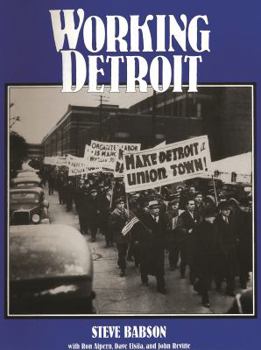Working Detroit: The Making of a Union Town
Select Format
Select Condition 
Book Overview
Babson recounts Detroit's odyssey from a bulwark of the "open shop" to the nation's foremost "union town." Through words and pictures, Working Detroit documents the events in the city's ongoing struggle to build an industrial society that is both prosperous and humane. Babson begins his account in 1848 when Detroit has just entered the industrial era. He weaves the broader historical realties, such as Red Scare, World War, and economic depression into his account, tracing the ebb and flow of the working class activity and organization in Detroit -- from the rise of the Knights of Labor and the American Federation of Labor in the 19th century, through the Congress of Industrial Organizations and the sitdown strike of the 1930s, to the civil rights and women's movements of the 1960s and 1970s. The book concludes with an examination of the present day crisis facing the labor movement.
Format:Paperback
Language:English
ISBN:0814318193
ISBN13:9780814318195
Release Date:January 1986
Publisher:Wayne State University Press
Length:252 Pages
Weight:1.92 lbs.
Dimensions:0.6" x 8.5" x 11.0"
Customer Reviews
1 rating
Labor History in Motown
Published by Thriftbooks.com User , 24 years ago
Babson's book looks at labor movement history in Detroit as a microcosm of American history as a whole. The field is one not usually covered by historians, and the nearness in time of the events allow for the use of living sources, both of which contribute to make the telling different and authentic. I liked the way that Babson connected events in Detroit with the big picture, as with the sidebar on the Debs campaign for President. The feeling that he conveys of those outdoor Socialist rallies is like that of a tent revival, a fervor generally absent from the politics on the left today. Detroit's leadership in American industrialism for most of the century now ending give the story of Labor's rise national importance, but natives will probably enjoy the book more, given it's intimate portrait of familiar places and faces from our recent past.






